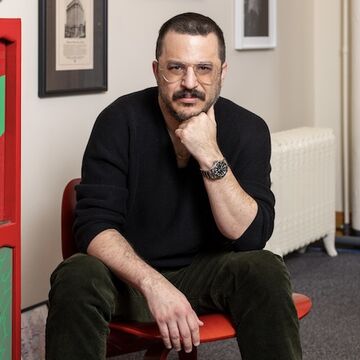|
Description
This two-day core design studio is the introductory course in the Arch/Inarc core studio sequence. Students learn architecture and interior architecture design processes including precedent research, formal analysis, schematic design, and design development, all using the latest software and tools. This course exemplifies the rigorous model of the architecture studio. It encourages design experimentation and provides an analytic framework for developing an advanced understanding of how drawing and model making shape design processes. This course requires students to have a laptop that meets SAIC's minimum hardware specs and runs the AIADO template.
|
Class Number
1051
Credits
6
|
|
Description
Architectural preservation, art conservation, archiving and collecting, even environmental protection: all these practices share a desire to preserve things of value, but how do we decide what's valuable? Using the laws, policies, and practices of architectural preservation as a starting point this studio will ask and propose answers to the question: what's worth preserving? Students will explore how preservation practice overlaps and complements the work of different museums, archives, and collections that define value and how they protect it; and propose strategies for assembling and maintaining their own collections in whatever media they choose. Course readings will focus on the history and contemporary practice of preservation, conservation, and collecting, including texts by Ariella Aisha Azoulay, Daniel Bluestone, Amanda Cachia and Alice Wong, the De-Colonial Collective on Migration of Objects and People, Shannon Mattern, and Jacqueline Hoang Nguyen, Jorge Otero-Pailos, Leah Samples, The South Side Home Movie Project. Course work will include weekly readings and in-class discussions and lectures. Students will work individually throughout the course to research how different institutions assemble and protect their collections, identify a subject of personal interest for preservation, and propose a preservation strategy for it in any medium of their choice.
|
Class Number
2312
Credits
3
|
|
Description
Acts of preservation are ancient and practiced broadly across cultures, from fermenting food, to telling and retelling stories, to fabricating and repairing clothing and shelter. In art and design, radical acts of preservation not only maintain part of the past, but imagine and enact new connections between past, present, and future. This Capstone studio will explore a range of contemporary radical preservation acts including critical architectural preservation and art conservation projects; institutional critiques of libraries, museums, and archives; and preservation of multiple, intersectional, and even contradictory pasts in any medium. Course work will include readings, in-class discussions, and critiques. Students will work individually throughout the course to research precedents of radical preservation acts, identify a subject of interest for preservation, and enact a preservation strategy for it in any art or design medium of their choice.
|
Class Number
2360
Credits
3
|

